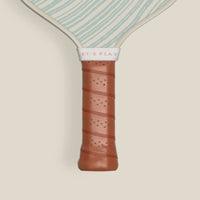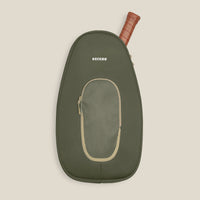5 Pickleball Hand Signals Everyone Should Learn
In pickleball, mastering communication with your partner is essential for executing on the court and staying in sync. Pickleball hand signals are a clever way to communicate positioning, shot plans, and strategies without saying a word. Today, we’re diving into the most useful hand signals in pickleball to help you build a stronger partnership on the court.
Using these doubles hand signals can keep you and your partner on the same page, add an extra layer of strategy to your game, and make for smoother, more cohesive play. Let’s explore the top signals and the best ways to incorporate them into your doubles strategy!
Why Use Hand Signals in Pickleball Doubles?
Using hand signals allows players to share intentions and make split-second decisions without having to talk mid-play. This type of non-verbal communication is essential for maintaining a strategic advantage in pickleball, where each move can make or break a rally.
Just like in tennis, where tennis hand signals in or out help clarify close calls and assist with positioning, pickleball hand signals take the guesswork out of play. Knowing that your partner is ready to switch sides or poach adds confidence and flow to your game.
1. Positioning Signals: Stacking or Staying
The positioning signal is one of the most basic, yet most effective, hand signals to learn in pickleball. It indicates if you’re staying in your current position or if you’re stacking—moving together to one side to set up a stronger position.
- How to Use It: A closed fist behind your back means you’ll stay, while an open hand indicates a stack.
- Why It Matters: Stacking can place both players in a more offensive stance, especially if one player has a preferred side or a strong forehand they want to keep in play.
With positioning signals, you’ll take advantage of stacking’s benefits, like setting up your team to return stronger shots. Discover a selection of pickleball paddles perfect for your style, whether you’re playing stacked or side-by-side.
2. The "Switch" Signal
The pickleball switch signal is used when you and your partner plan to swap sides after a serve or return. This signal is ideal when you’re stacked or when one player is more agile on a certain side of the court.
- How to Use It: A thumbs-up or thumbs-down is commonly used to indicate a switch or no switch after the next shot.
- When to Use It: This signal is helpful when your team has an established plan to cover each other’s shots or if you anticipate needing to change positions quickly.
The switch signal can prevent awkward moments where both players move to the same side, potentially leaving a gap for opponents to exploit. For even more coordinated play, consider a matching outfit with our line of pickleball clothing that’ll keep you comfortable and ready to make fast moves.
3. Poaching Signal: Taking Control of the Shot
The poaching signal is an essential tool for teams who want to make aggressive plays. Poaching occurs when one player steps in to take a shot that’s on their partner’s side, usually to keep the rally moving with a high-impact return.
- How to Use It: A single finger held behind the back can indicate an intent to poach on the next shot.
- Why It Matters: Letting your partner know you plan to poach helps them anticipate where to go next, reducing the risk of gaps in your defense.
4. Shot Placement Signals: Where the Ball’s Going
Communicating where you intend to place the ball is a great way to keep your partner in sync with your strategy. Shot placement signals help your teammate anticipate where the ball will land and prepare accordingly. To get the most out of your game, ensure you're using high-quality pickleball balls that offer consistent bounce and performance.
- How to Use It: A flat hand pointing in a certain direction indicates cross-court or down-the-line shots, depending on your position.
- Why It Matters: These signals ensure you’re both on the same page, whether aiming for an open spot or trying to set up a challenging return.
5. Defensive or Offensive Play Signals
Finally, a simple way to signal your partner on your upcoming approach is by letting them know whether you’ll play offensively or defensively. This can be particularly useful when you need to adapt to your opponent's playing style or to vary up your own strategy.
- How to Use It: A closed fist could signal a defensive play, while an open hand signals offense.
- When to Use It: In high-stakes moments or during difficult rallies, knowing if your partner will keep the ball in play softly or aim for an aggressive shot can make all the difference.
How to Practice Pickleball Hand Signals
Once you’re familiar with these hand signals, it’s time to practice with your partner. Here’s how to make the most of these skills:
- Repetition is Key: Before each serve, practice the signals until they become second nature.
- Simple Signals Work Best: Start with one or two key signals and gradually add more as you get comfortable.
- Communicate Off-Court: After each game, discuss what worked and what didn’t to improve your hand signals for next time.
- Be Flexible: Adapt your signals based on what’s happening in the game. Flexibility helps you stay ahead of opponents.
Ready to get started? Browse our latest pickleball gear to ensure you’re fully equipped for every match. Master these hand signals and watch your game improve with each practice.
Happy playing!










